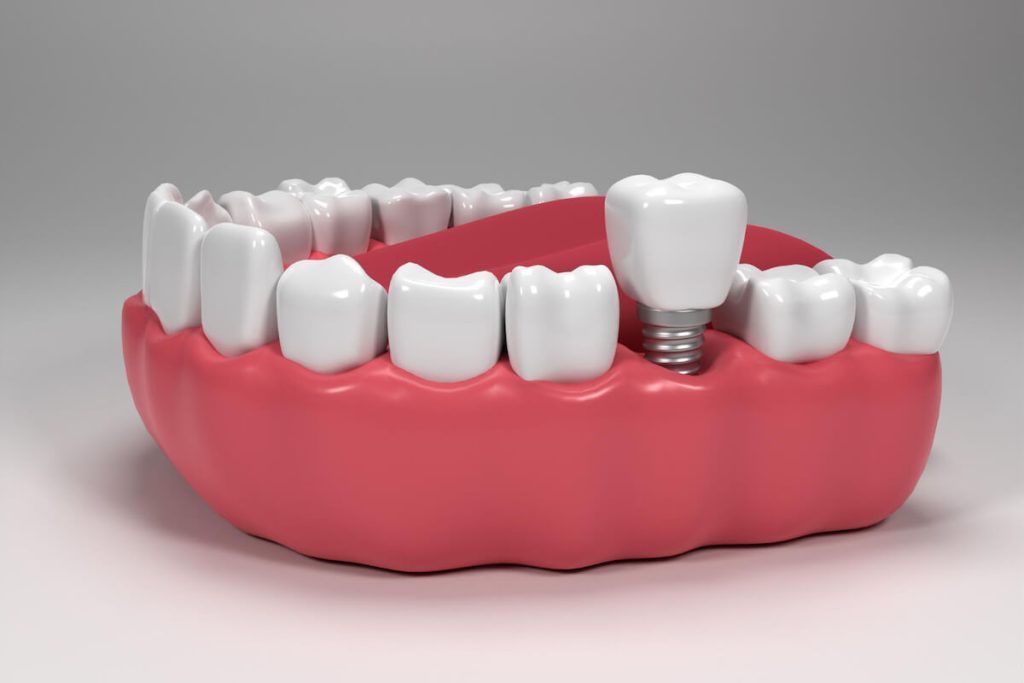Tooth Replacement Options – What Are My Choices?

Whether you are looking to replace one tooth or many, there are several factors to consider.
Since dental implants resemble natural teeth in appearance and functionality, they are one of the best options for replacing lost teeth.
Your tooth replacement options often depend on how your teeth become lost or damaged, the strength of your jaw and bone structure, and what dental procedures may be needed.
Find out more below.
Dental Implants
Tooth implants have been the gold standard for replacing missing teeth for many years. The implant houses a prosthetic tooth—a crown—and is inserted into the jaw.
Unlike other tooth replacement methods, dental implants are limitless after healing. It’s just like having a natural tooth.
In recent years, digital technology has made dental implants even more desirable.
Using computer-guided surgery, dentists can create precise models of patients’ jaws, gums, and teeth and correctly place the dental implants.
Digital dental implants offer a more efficient and accurate procedure than traditional methods.
Treatment for dental implants does need to be done in stages. Because they are inserted into the jawbone, time needs to be factored in for the bone to fuse with the implant and for the site to become stable enough to support the crown.
Generally, the dental implant process takes 3-9 months to complete, but don’t worry—you won’t be without a tooth or teeth, as temporary crowns are usually fitted if the missing gap is in the smile line.
Crowns and Bridges
When replacing missing teeth, people often need clarification about dental implants, crowns and bridges. Dental implants are for teeth completely removed with no existing root or tooth structure.
Crowns are the prosthetic teeth that sit on the dental implant but can be used on their own for things like broken teeth, teeth that have become damaged through grinding, decay, or jaw clenching, to fix cosmetic imperfections, or as part of a procedure like root canal therapy.
Crowns are for one tooth; bridges are for multiple. They can be used with dental implants or as stand-alone tooth replacement options.
Sometimes, temporary crowns or bridges might be necessary, while the final versions are custom-made.
Dentures
Dentures can be partial (for a few teeth) or complete (to replace all teeth). They’ve come a long way since the stereotypical fake teeth of old.
Modern versions can look incredibly realistic and are more comfortable to wear than they used to be. They are fitted to the gumline, but remember, they must be removed for cleaning or sleeping.
Sometimes, they are the only tooth replacement option because not all jaws and bones can support more permanent solutions such as crowns, bridges, and dental implants.
Dental Bonding
Okay, this isn’t a full tooth replacement option, but dental bonding does patch teeth up—and it is a little more fine-grained than it sounds.
A hard tooth-coloured material is applied to the tooth/teeth and may be used to repair cracks, minor gaps, tooth size, minor fractures, and more.
It may also be recommended as a preventative measure if your teeth risk breaking.
The good news is that bonding teeth can be completed in a quick consultation; the average procedure takes only thirty minutes in the chair.
Making the Right Choice
Choosing the right tooth replacement option can feel overwhelming, but it’s important to remember that you don’t have to make this decision alone. Speaking with your Leichhardt dentist may assist you in weighing the pros and drawbacks of each option while accounting for your particular situation, which may include your oral health, lifestyle, and long-term dental objectives.
Our compassionate dental team is dedicated to helping you find the best solution for your smile. Whether you’re considering dental implants, crowns, bridges, dentures, or another option, we’re here to guide you through the process with personalised care and attention.
Restorative Dentistry in Leichhardt
If you’re ready to explore tooth replacement options, don’t hesitate to reach out.
My Local Dentists Leichhardt’s friendly and experienced team is here to help.
Book a consultation or call us on (02) 9171 0840 today or request your appointment online.
We are located at Shop 48, Leichhardt Marketplace Shopping Centre, 122-138 Flood Street in Leichhardt.

